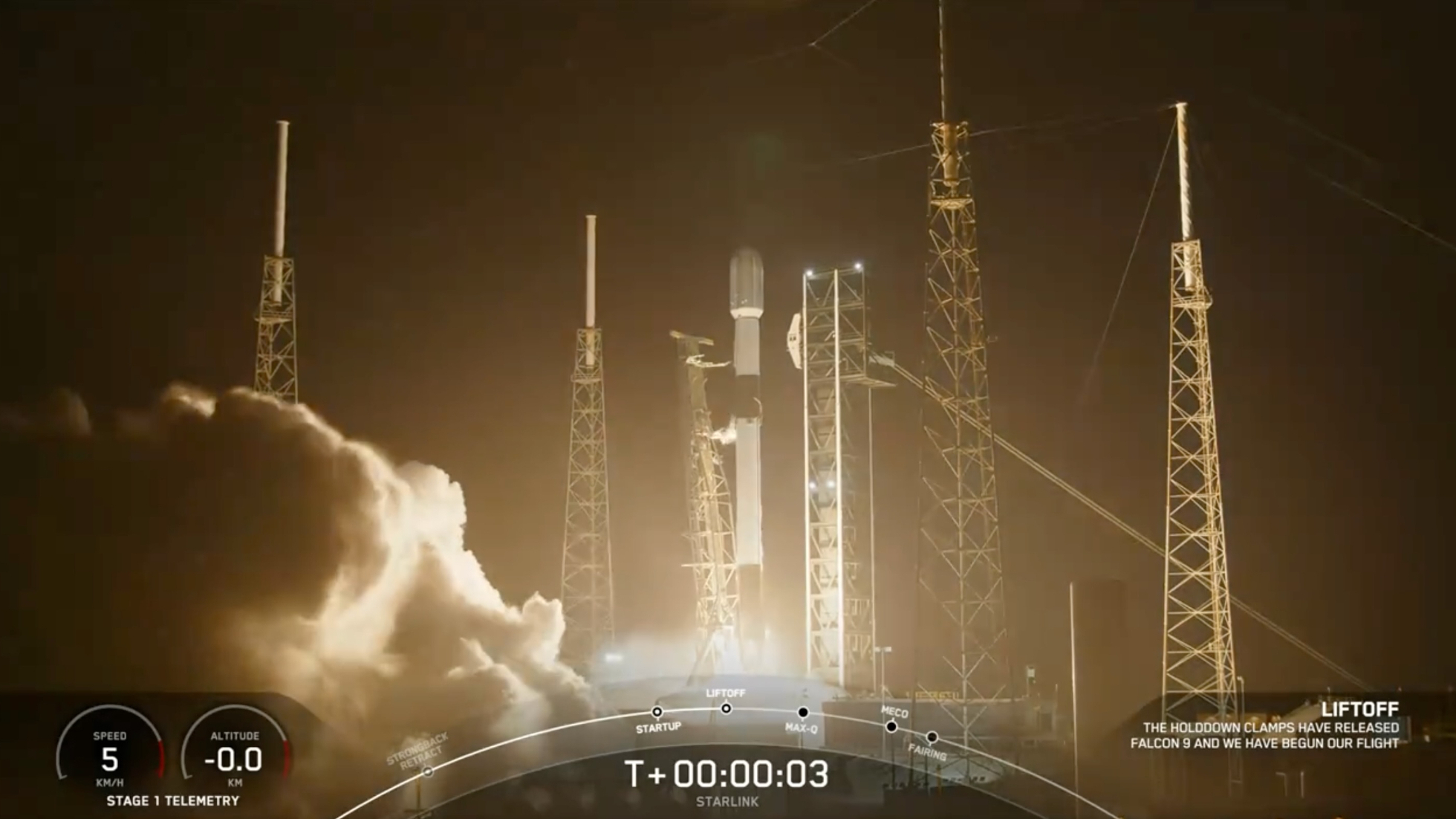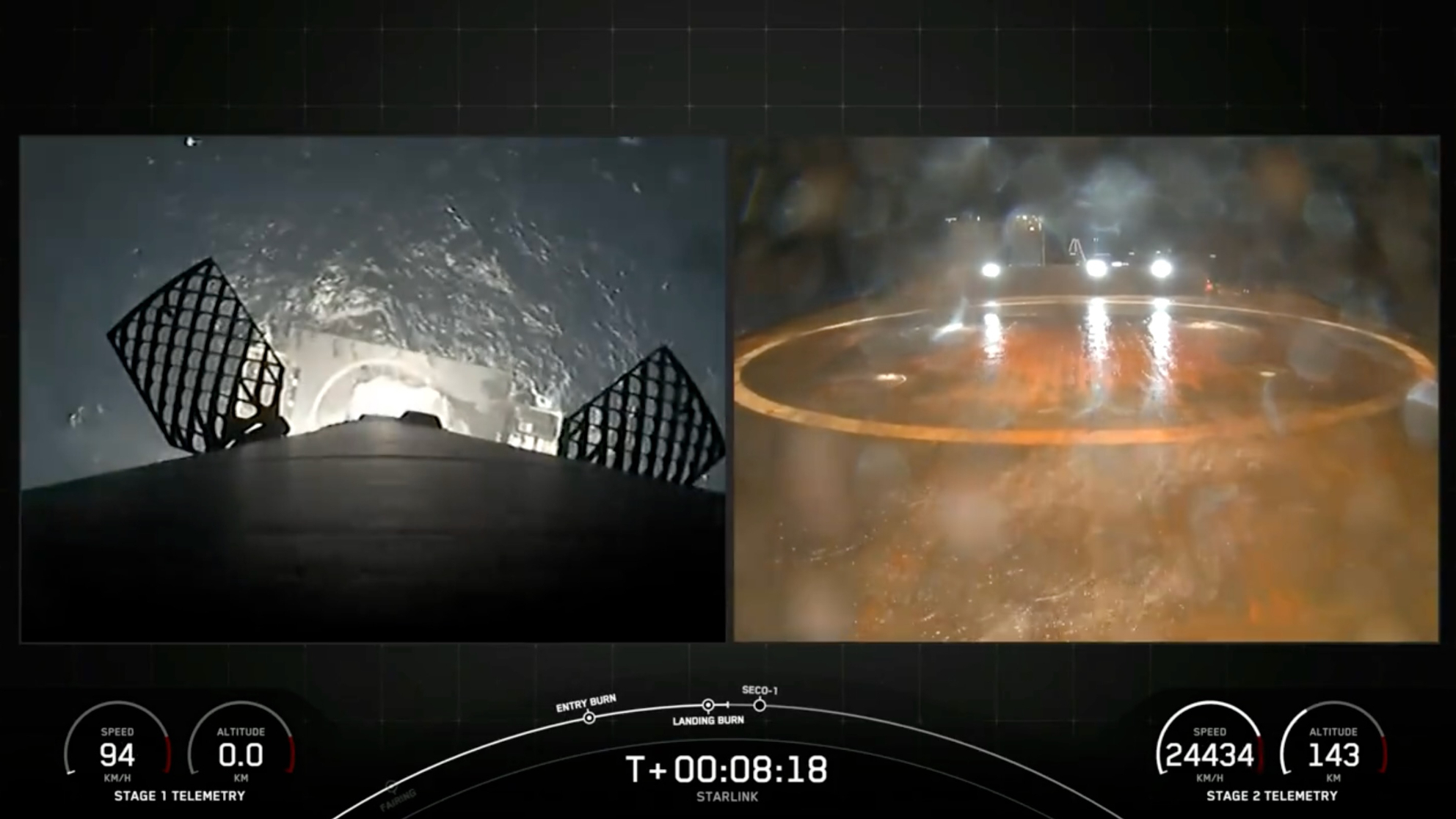SpaceX sent yet another batch of its Starlink internet satellites to orbit tonight (Oct. 18).
A Falcon 9 rocket topped with 20 Starlink craft, including 13 with direct-to-cell capability, lifted off from Florida's Cape Canaveral Space Force Station tonight at 7:31 p.m. EDT (2331 GMT).
The Falcon 9's first stage came back to Earth about 8.5 minutes after liftoff as planned, landing on the SpaceX drone ship "Just Read the Instructions" in the Atlantic Ocean.

It was the 17th launch and landing for this particular booster, according to a SpaceX mission description.
The Falcon 9's upper stage, meanwhile, continued hauling the Starlink satellites to low Earth orbit. It will deploy them there about 64 minutes after liftoff, if all goes to plan.
Related: Starlink satellite train: How to see and track it in the night sky

The new batch will join the huge and ever-growing Starlink megaconstellation, which currently consists of more than 6,400 active spacecraft, according to astrophysicist and satellite tracker Jonathan McDowell. About 230 of those satellites are direct-to-cell craft.
Get the Space.com Newsletter
Breaking space news, the latest updates on rocket launches, skywatching events and more!
SpaceX has launched 96 Falcon 9 missions so far in 2024, two-thirds of them dedicated to building out the Starlink network. The company has also launched two Falcon Heavy missions and three test flights of its Starship megarocket this year.
Editor's note: This story was updated at 7:45 p.m. ET on Oct. 18 with news of successful launch and rocket landing.
Join our Space Forums to keep talking space on the latest missions, night sky and more! And if you have a news tip, correction or comment, let us know at: community@space.com.

Michael Wall is a Senior Space Writer with Space.com and joined the team in 2010. He primarily covers exoplanets, spaceflight and military space, but has been known to dabble in the space art beat. His book about the search for alien life, "Out There," was published on Nov. 13, 2018. Before becoming a science writer, Michael worked as a herpetologist and wildlife biologist. He has a Ph.D. in evolutionary biology from the University of Sydney, Australia, a bachelor's degree from the University of Arizona, and a graduate certificate in science writing from the University of California, Santa Cruz. To find out what his latest project is, you can follow Michael on Twitter.
-
Unclear Engineer I saw it from Maryland. I was out looking for the Atlas comet (no luck) on a mostly clear evening, but there is too much moisture and light pollution where I live. But, scanning the sky with my marine binoculars, I saw a rather fast moving "comet like" thing that looked like the rear view of a rocket exhaust, travelling from roughly south to roughly east of my position. That was at 7:39 pm EDT. By the way the exhaust was fanning out, I think it was the upper stage and already mostly out of the atmosphere.Reply
BTW, the article says the launch occurred at 7:31 pm EDT, while the article sub header says "Liftoff occurred at 10:31 p.m. ET tonight (Oct. 18)." And, I was reading that before 9 pm EDT. And, it seems to indicate that Mike Wall published the story about 6:30 pm.
So, somebody please get Mike a wristwatch that keeps proper time. (Or maybe proof-read his stuff for him?)









